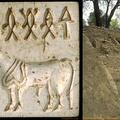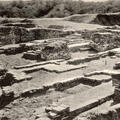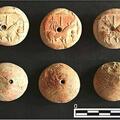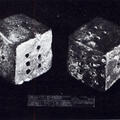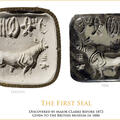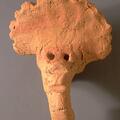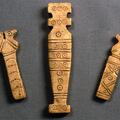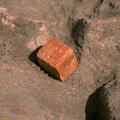Mystery at Mound F #3
A perfect unicorn seal found in Trench 49E, Harappa. The craftsmanship and balance of the three fish signs, the arrow and two strokes with the so-called unicorn's head and sacred relic is remarkable. Excavations in 1997 at the southeast corner of the Mound F "granary" area were undertaken to recover a full sequence of pottery, architectural features, and inscribed objects. Here workers have found a seal near the base of the excavations in Trench 41NE that dates only somewhat later than the original "granary" structure.

